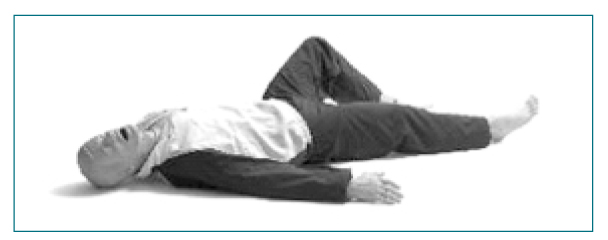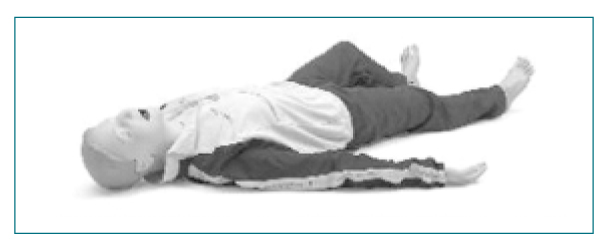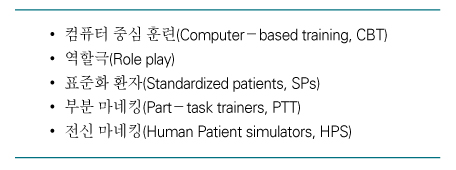 |
 |
- Search
| J Korean Med Assoc > Volume 48(3); 2005 > Article |
Abstract
The simulation for medical and healthcare applications has recently been employed in our country in medical colleges for students' educational purposes. In terms of simulation, aviation, nuclear experimentation, as well as banking services have employed their own simulation programs. In the medical field, there are macro- and microsimulations. Full-scale human simulator and part task trainers belong to macrosimulation, and PC-based virtual realties belong to microsimulation. Both are very effective educational tools to bridge the medical knowledge to clinical practices. In simulations the role of the facilitator is very important and most learning activities are accomplished during "debriefing." Nowadays some centers in our country are introducing medical simulation. An increasing attention to simulation technologies would be critical for the dissemination of the concepts and their applications.
References
1. Maran NJ, Glavin RJ. Low-to high-fidelity simulation-a continuum of medical education? [see comment] Medical Education 2003;37:Suppl 1. 22-28.
2. Issenberg SB, Pringle S, Harden RM, Khogali S, Gordon MS. Adoption and integration of simulation-based learning technologies into the curriculum of a UK Undergraduate Education Programme. Medical Education 2003;37:Suppl 1. 42-49.
3. Kohn LT, Corrigan Janet, Donaldson M. To Err is Human: Building a Safer Health System 2000;Washington DC: National Academy Press.
4. Grenvik A, Schaefer JJ 3rd, DeVita MA, Rogers P. New aspects on critical care medicine training. Current Opinion in Critical Care 2004;10:233-237.
5. Macedonia CR, Gherman RB, Satin AJ. Simulation laboratories for training in obstetrics and gynecology. Obstetrics & Gynecology 2003;102:388-392.
6. Tsai TC, Harasym PH, Nijssen-Jordan C, Jennett P, Powell G. The quality of a simulation examination using a high-fidelity child manikin. Medical Education 2003;37:Suppl 1. 72-78.
7. Weller JM. Simulation in undergraduate medical education: bridging the gap between theory and practice. Medical Education 2004;38:32-38.
8. Kyle RR, Via DK, Lowy RJ, Madsen JM, Marty AM, Mongan PD. A multidisciplinary approach to teach responses to weapons of mass destruction and terrorism using combined simulation modalities.[see comment]. Journal of Clinical Anesthesia 2004;16:152-158.
9. Ostergaard D. National Medical Simulation training program in Denmark. Critical Care Medicine 2004;32:Suppl 2. S58-S60.
10. Grenvik A, Schaefer JJ 3rd. Medical simulation training coming of age.[comment]. Critical Care Medicine 2004;32:2549-2550.
- TOOLS
-
METRICS

-
- 9 Crossref
- Scopus
- 1,067 View
- 2 Download
-
Related articles in
J Korean Med Assoc -
Medical Treatment of Constipation1998 October;41(10)
Medical Societies in Korea2000 July;43(7)
Medical Disputes Conciliation Law2000 October;43(10)










